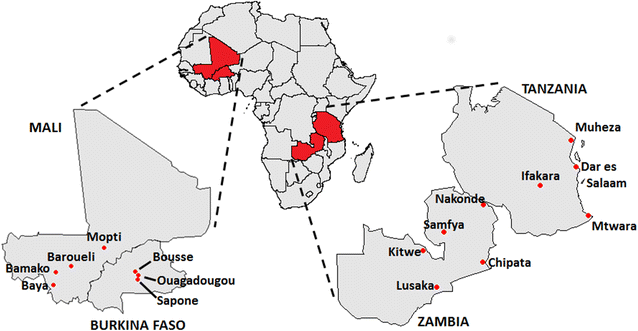Key traveller groups of relevance to spatial malaria transmission: a survey of movement patterns in four sub-Saharan African countries
Written on April 12th, 2016 by JMLab
Background
As malaria prevalence declines in many parts of the world due to widescale control efforts and as drug-resistant parasites begin to emerge, a quantitative understanding of human movement is becoming increasingly relevant to malaria control. However, despite its importance, significant knowledge gaps remain regarding human movement, particularly in sub-Saharan Africa.
Conclusions
Women travelling with children were a remarkably consistent traveller group across all four countries surveyed. They are expected to contribute greatly towards spatial malaria transmission because the children they travel with tend to have high parasite prevalence. Youth workers were a significant traveller group in Mali and are expected to contribute greatly to spatial malaria transmission because their movements correlate with seasonal rains and hence peak mosquito densities. Interventions aimed at interrupting spatial transmission of parasites should consider these traveller groups.
Reference
Marshall, J.M., Touré, M.B., Ouédraogo, A.L., Ndhlovu, M., n.d. Key Traveler Groups and Movement Patterns of Relevance to Spatial Disease Transmission in Sub-Saharan Africa.